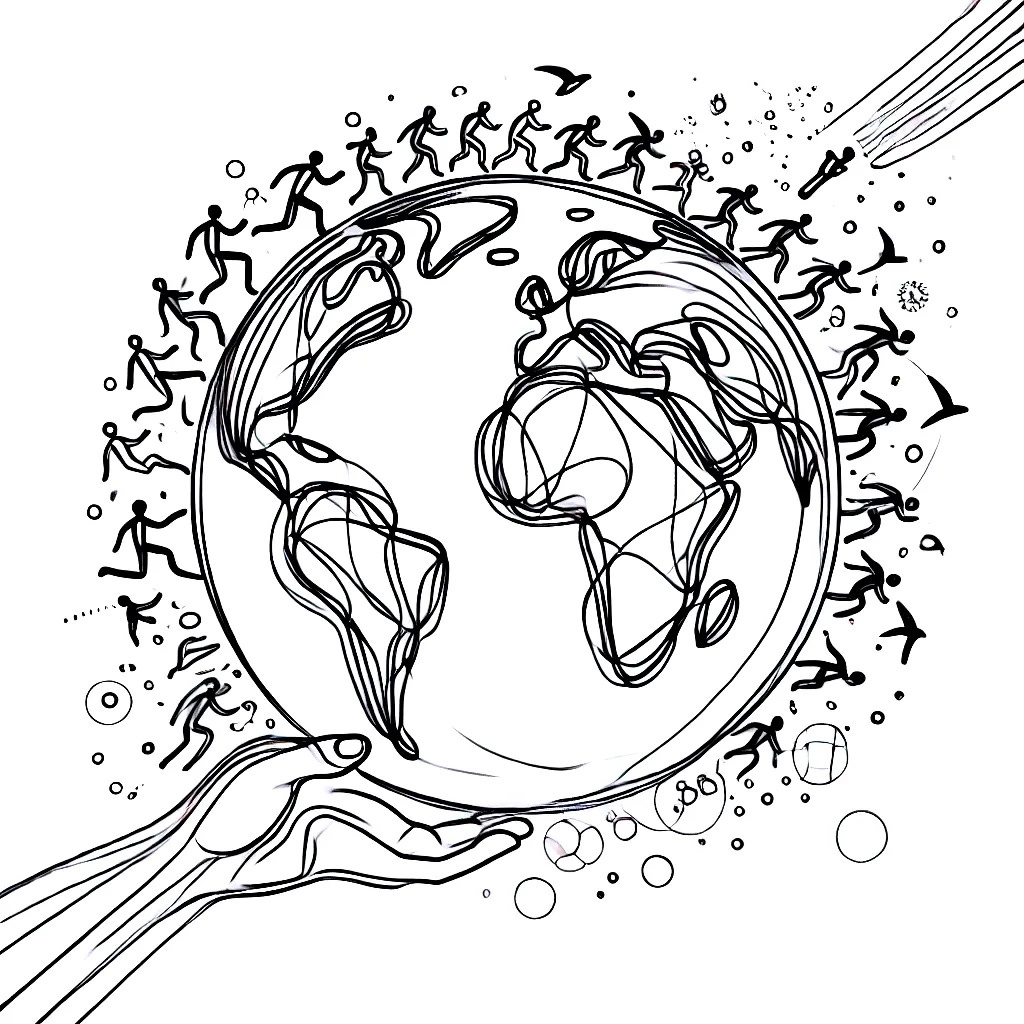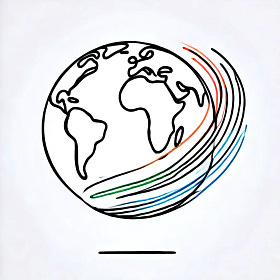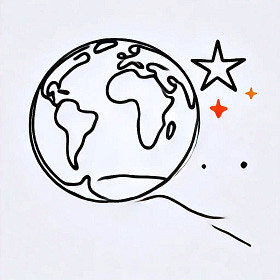Q1 Breakthroughs: Where the World Moves Forward
Beyond start-of-quarter economic indicators, geopolitical analysis, and technology or innovation forecasts, real-world breakthroughs provide key insights into the direction of global progress.
Breakthroughs don’t stand alone. They set off waves of change across industries, economies, and societies.
As author Nate Silver put it, “Distinguishing the signal from the noise requires both scientific knowledge and self-knowledge.”
In early 2025, key breakthroughs are driving progress across healthcare, energy, technology, and scientific exploration. Some may go unnoticed, especially as leaders focus on immediate demands, yet they offer valuable insights into the shifts shaping the world.
Our Lens. Our Leverage.
What we seek determines what we find and, ultimately, what we achieve.
Predicting the remainder of 2025 is challenging in a complex global landscape. Yet, every 90 days, it’s valuable to zoom out to zero in. By clearly identifying external shifts, we can proactively leverage them, adjusting our strategies, teams, and actions to drive meaningful impact and sustainable commercial success.
Beyond start-of-quarter economic indicators, geopolitical analysis, and technology or innovation forecasts, real-world breakthroughs provide key insights into the direction of global progress.
Early 2025 Breakthroughs
The following selection of breakthroughs from the first quarter of 2025 have already set ripple effects in motion across industries, economies, and society.
Health and Medicine
Early Pancreatic Cancer Detection
Oregon Health & Science University introduced the PAC-MANN blood test - short for “protease activity-based assay using a magnetic nanosensor.” Previously, pancreatic cancer was typically detected through costly, invasive procedures like biopsies or imaging scans, often performed only after symptoms had appeared and the cancer was advanced. Now, PAC-MANN accurately identifies hard-to-detect early-stage pancreatic cancer with 85% accuracy using just 8 microlitres of blood, at a cost of less than a penny per test.
This breakthrough enables routine, accessible screening, significantly increasing early diagnosis, and potentially transforming global survival rates and healthcare outcomes.
AI Integration in Healthcare - DeepSeek Implementation
Cornell University has highlighted China’s widespread adoption of DeepSeek, an AI system known for advanced reasoning capabilities and cost-effectiveness. Initially piloted in major Shanghai medical institutions in early 2025, in the first quarter of the year, DeepSeek has rapidly expanded nationwide across China’s tertiary hospitals.
It significantly enhances diagnostic accuracy, streamlines hospital workflows, and improves patient management. Applications include AI-driven pathology, advanced imaging analysis, and clinical decision-support systems, optimising medical processes and reducing cognitive burden on healthcare professionals.
However, this rapid integration also raises important regulatory and ethical considerations, especially around accountability in AI-assisted diagnosis and automation bias, marking this as a critical area for industries globally to monitor.
Environment and Energy
Sustainable CO₂ to Fuel Conversion
Researchers at the University of Cambridge have developed a solar-powered reactor that efficiently captures atmospheric CO₂ and converts it into liquid fuel. Unlike most carbon capture technologies, this reactor does not require fossil-fuel-based power, nor the transport and storage of carbon dioxide. Instead, it directly converts atmospheric CO₂ into something useful - syngas, a key intermediate in producing many chemicals and pharmaceuticals - using only sunlight.
According to the researchers, this method eliminates the need for transportation and storage, making it significantly easier to scale up compared to earlier solar-powered devices. This has the potential to reduce fuel production costs by removing reliance on fossil-fuel energy inputs and complex CO₂ transportation and storage infrastructure. As scalability improves, it may lower the cost of clean fuel alternatives, increasing their commercial viability and accessibility while reducing reliance on traditional fossil fuels.
Fusion Energy Record
France’s WEST tokamak sustained stable plasma for a record 22 minutes, marking a crucial milestone toward commercially viable fusion energy. During the test, the plasma reached 50 million degrees Celsius (90 million degrees Fahrenheit) - roughly three times the temperature of the Sun’s core.
This breakthrough moves us closer to harnessing energy through hydrogen atom fusion, a process that could provide a virtually unlimited, clean, and sustainable power source.
The global race for sustained fusion energy is intensifying. The previous record of 1,066 seconds (17 minutes and 46 seconds) was set in January 2025 by China’s EAST tokamak. With advancements accelerating, each breakthrough pushes fusion energy closer to commercial reality.
Technology and Quantum Computing
Microsoft’s Majorana 1 Quantum Processor
Capable of integrating up to one million qubits, Microsoft’s Majorana 1 quantum processor represents a significant leap toward practical quantum computing, employing topological superconductivity to enhance qubit stability and reliability. Microsoft expects this innovation to accelerate quantum computing’s timeline from decades to years, making it capable of solving meaningful, industrial-scale problems. The processor’s advanced computational power holds transformative potential across multiple industries.
In environmental science, it could enable quantum simulations that lead to breakthroughs in catalysts capable of breaking down microplastics, offering a novel approach to tackling pollution.
In healthcare, it may contribute to the development of self-healing materials, enhancing durability in medical devices and infrastructure.
In cryptography, its ability to perform complex calculations at an unprecedented scale raises the urgency for quantum-resistant encryption technologies, as existing security protocols could become obsolete.
Amazon’s Ocelot Quantum Chip
Amazon introduced Ocelot, a breakthrough quantum computing chip developed by the AWS Center for Quantum Computing at the California Institute of Technology, designed to reduce the costs of quantum error correction by up to 90% . Error correction has long been a major barrier to scaling quantum computing, and Ocelot’s efficiency accelerates the path toward fault-tolerant quantum computers.
By making quantum systems more stable and cost-effective, this advancement enhances their commercial viability, with far-reaching implications across industries such as finance, logistics, drug discovery, and materials science. In finance, quantum computing could revolutionise risk analysis and portfolio optimisation; in logistics, it could enable more efficient supply chain modelling; and in pharmaceuticals, it may lead to accelerated drug development.
Space Exploration
Lunar Water Production - SonoChem
Gloucestershire-based Naicker Scientific has developed a cutting-edge system to extract and purify drinking water from the Moon’s frozen soil. Inspired by kitchen microwave technology, the SonoChem System uses a combination of microwaves and ultrasound to defrost lunar ice and break down contaminants, making the water safe for consumption.
This innovation marks a significant step toward sustainable lunar habitation and supports NASA’s long-term goal of establishing a permanent human presence on the Moon. By enabling in-situ resource utilisation, the system reduces reliance on costly Earth-based resupply missions, paving the way for extended space exploration and future missions to Mars and beyond.
Mars Rover to Search for Signs of Life
The UK completed its first Mars rover, Rosalind Franklin, a £1 billion project designed to search for signs of past or present life. The rover will drill two metres into Mars’ surface to analyse soil samples, hunting for fossilised microbes that could reveal insights into our solar system’s history.
Scheduled for launch in 2028 aboard a NASA rocket, it is expected to land in 2030. The mission advances knowledge of climate shifts and the potential for life beyond Earth. It also showcases UK robotics and autonomous navigation technologies, with applications in extreme environments like nuclear power plants and the deep ocean.
Deep Ocean Exploration
Shapeshifting Robot Submarine Reaches Earth’s Deepest Point
Chinese researchers unveiled a shapeshifting robot submarine that successfully descended 36,000 feet into the Mariana Trench, the deepest point on Earth. Designed by Beihang University, this 50 cm-long autonomous drone can morph its structure to adapt to different tasks, such as swimming or crawling along the seabed.
Inspired by the movement of the batfish and weighing just 16 grams, it minimises disturbance to sediment, enabling delicate exploration of previously inaccessible deep-sea environments. This breakthrough enhances our ability to study extreme underwater ecosystems, opening new possibilities for discovering novel marine life and better understanding the deep ocean’s role in global climate regulation.
Global Health Equity
African Cancer Atlas
Ghana-based Yemaachi Biotech partnered with Roche to launch The African Cancer Atlas (TACA), the world’s most comprehensive cancer genomic database focused on African populations. Addressing the critical underrepresentation of African genomic data, this initiative will provide essential insights for precision oncology, improving cancer outcomes for African patients and beyond. TACA will compile genomic and clinical data from 7,500 African cancer patients, generating 15,000 genomes (tumour and paired normal). These insights will help identify novel cancer biomarkers and therapeutic targets, tackling disparities in cancer treatment.
By bridging the data gap in cancer genomics, TACA is set to transform global oncology research, ensuring African populations - historically underrepresented in medical studies - benefit from the latest advancements. It also strengthens Africa’s role in biotech and pharmaceutical research, positioning the continent as a key player in genomic medicine.
Artificial Intelligence for Scientific Collaboration
Google’s Gemini 2.0 AI Co-scientist
Google unveiled the AI Co-Scientist, a sophisticated multi-agent system built on Gemini 2.0, designed to function as a virtual collaborator for scientists. This tool accelerates scientific and biomedical discoveries by assisting researchers in generating novel hypotheses, formulating research proposals, and structuring experiments. Scientists can specify research objectives - such as understanding the spread of a disease-causing microbe - using natural language, and the system will propose testable hypotheses, summarise relevant literature, and suggest experimental methodologies.
The AI Co-Scientist operates through specialised agents that mirror the scientific process: generating initial hypotheses, evaluating their plausibility, refining ideas, and ranking them based on potential impact. Early applications have demonstrated its ability to propose drug repurposing candidates for acute myeloid leukemia, identify novel epigenetic targets for liver fibrosis, and recapitulate unpublished bacterial evolution research.
While the system significantly enhances research efficiency, it is designed as a collaborative tool rather than an autonomous decision-maker, supporting experts in refining their work rather than replacing human-led scientific discovery.
Navigating Breakthroughs in 2025
Each breakthrough sets off a ripple effect, with the potential to shape the world in new ways. Although scientific in nature, these breakthroughs confirm that:
In 2025, breakthroughs are accelerating and emerging from all corners of the globe.
They cross borders, solving problems beyond national boundaries.
They break down barriers, setting off ripple effects that will shape new products, services, and business models for years to come.
Recognising and responding to meaningful signals - across healthcare, energy, quantum computing, and exploration - will drive business success and societal progress across industries and solutions.
While some leaders retreat into local priorities, others see the bigger picture. And, they set themselves up to play a bigger game in 2025 and beyond.
Which breakthrough from the first quarter of 2025 - covered here or from your own observations - has the potential to shape your business or industry?
Futher Reading
2024 Spun Faster
Each year, Earth travels approximately 940 million kilometres through space as it circles the sun. We each journey at a speed of about 107,227 kilometres per hour. While this distance and speed remain constant, 2024 saw an acceleration in events and shifts on our planet. A number of records were broken, acting as indicators of significant changes - a mi…
25 Shifts to Shape Commercial Success in 2025
In 2024, we’ve explored key global shifts shaping how leaders think, act, and lead globally for a strategic edge. While certain world leaders are reinforcing borders through nationalistic policies, other leaders across business, politics, and society are dismantling barriers, making it faster, smarter, and more impactful for leaders anywhere to develop …




